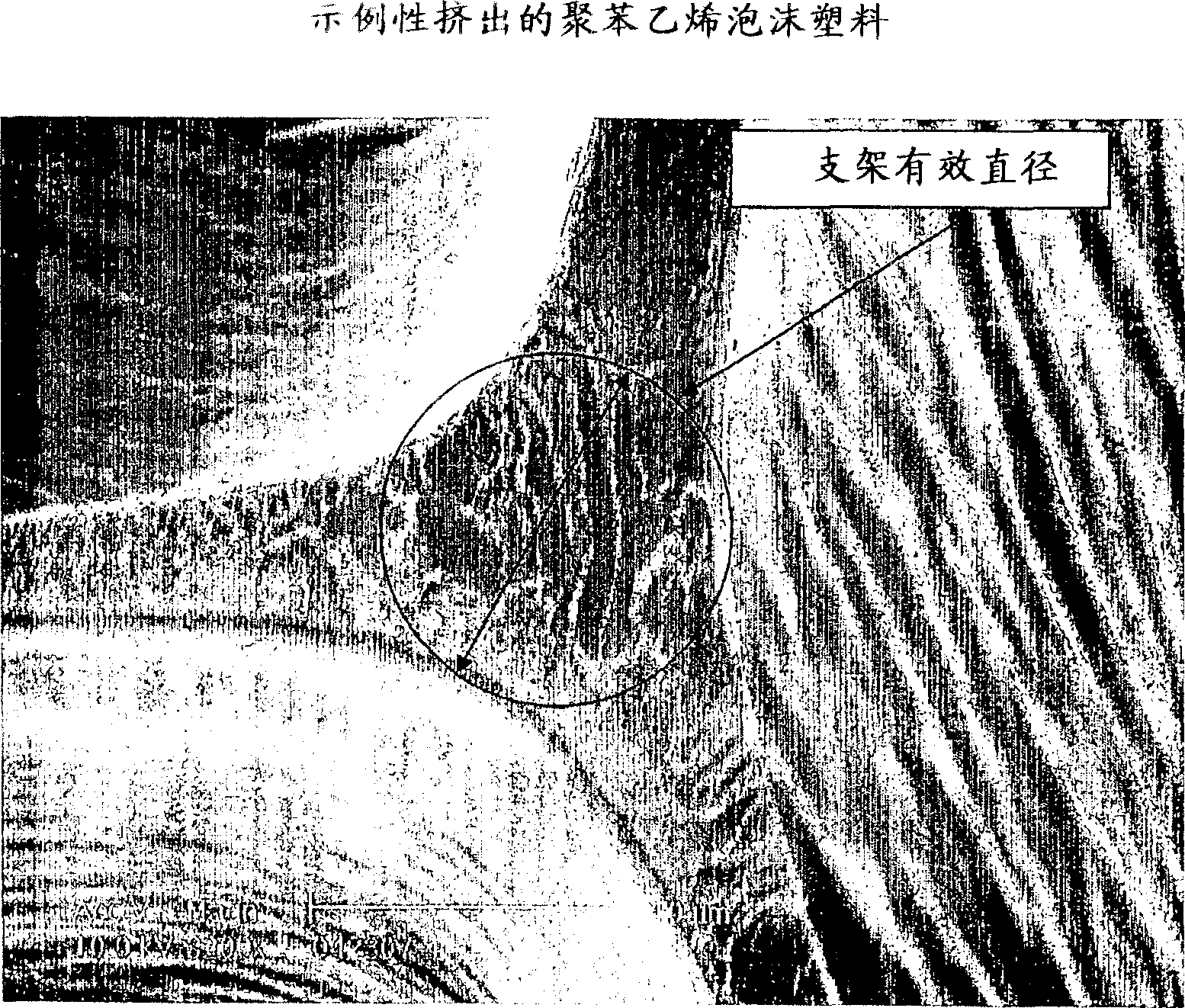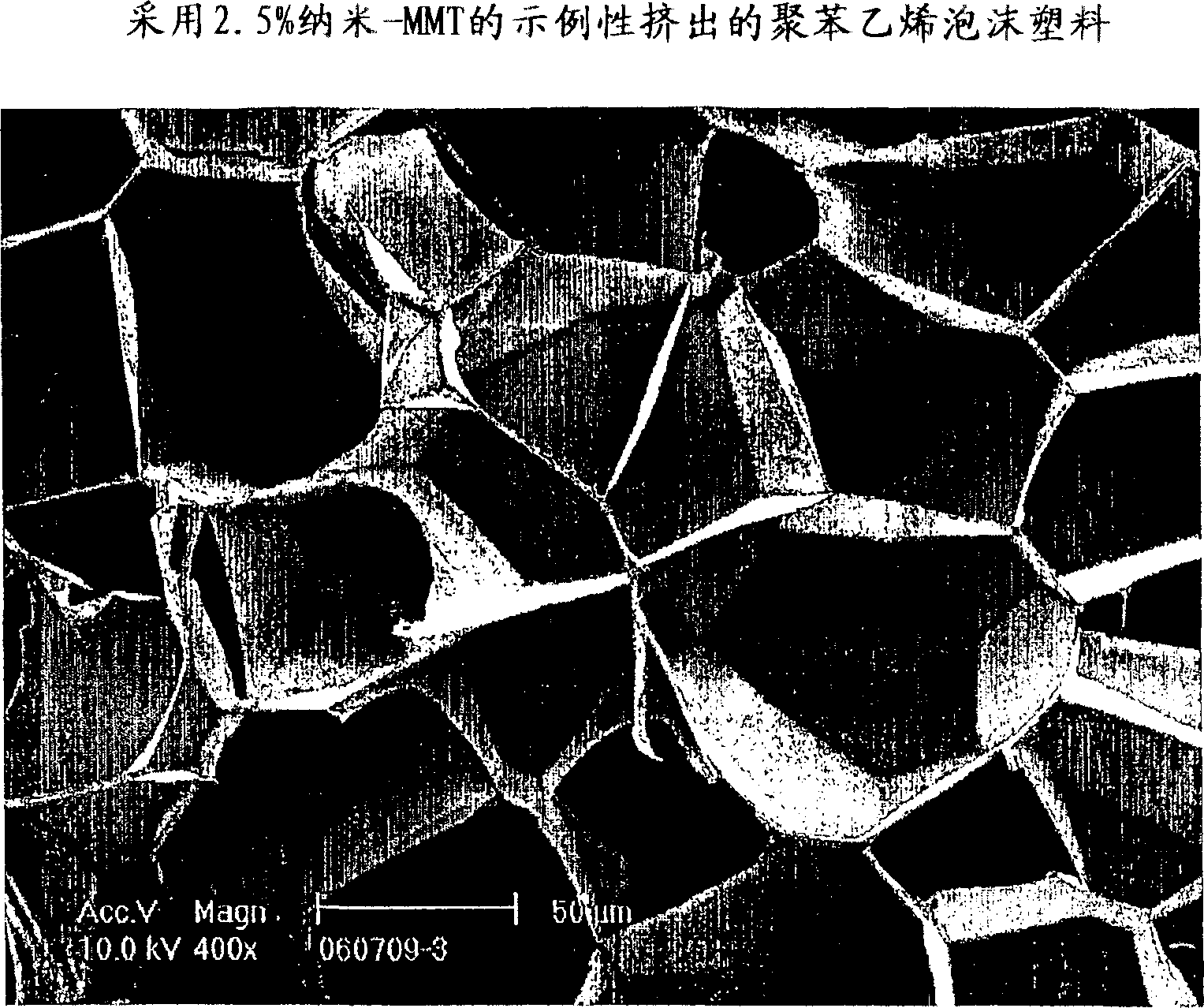Method of forming thermoplastic foams using nano-particles to control cell morphology
一种泡沫塑料、纳米颗粒的技术,应用在用于材料和表面科学的纳米技术、纳米技术、纳米技术等方向,能够解决加工困难等问题
- Summary
- Abstract
- Description
- Claims
- Application Information
AI Technical Summary
Problems solved by technology
Method used
Image
Examples
Embodiment 1
[0033] Styrofoam was prepared using an LMP extruder with (7347) and without (7346) a nanoparticle loading of 2.5%. The nanoparticles used to prepare this example were an organoclay of a specific grade Nano-MMT20A from Southern Clay Products Inc. in combination with a polystyrene polymer of a specific grade CX5197 from Atofina Melt mixing to form a molten polymer. When examined by X-ray diffraction, the nanoparticles exhibit an intercalated nano-MMT layer structure. The comparative sample did not contain any nanoparticles but incorporated 0.8% talc loading as a nucleating agent. The comparative sample exhibited an average cell size of about 186 microns, while the exemplary example foam using nanoparticles exhibited a significantly lower average cell size of about 60 microns. This exemplary embodiment also exhibits a cell wall thickness of about 0.5 microns and a scaffold effective diameter of about 5 microns. As reflected in Table 2 below, the exemplary foam composition exhi...
Embodiment 2
[0037] A sample foam (7349) was prepared according to the method outlined in Example 1, but using 0.5% intercalated nano-MMT in the polystyrene composition to obtain a density of about 26.5 kg / m 3 , an exemplary foam having a thickness of about 38 mm and a width of about 600 mm. The reduction in the amount of nano-MMT incorporated into the composition resulted in a slightly increased cell size compared to Example 1, about 83 microns ( image 3 ), while maintaining an improved strength over the comparative foam composition, 329 kPa.
Embodiment 3
[0039] Extruded in LMP using nano-calcium carbonate from Ampacet with a nanoparticle loading of 2%, and 1% talc as an additional nucleating agent and 1% stabilized HBCD as a flame retardant Preparation of foam in machine (7790). The nano-calcium carbonate particles are typically elongated - average size 80nm x 2μιη, and are provided as a 50% masterbatch composition combined with an olefinic copolymer carrier resin. The remaining formulation was polystyrene: 80% Nova 1220 (melt index = 1.45) and 16% Nova 3900 (melt index = 34.5). The exemplary foam produced was 28 mm thick, 400 mm wide and had an average cell size of 230 microns, and the degree of cell orientation (the ratio of the cell size in the extrusion direction to the cell size in the thickness direction (x / z)) up to 1.54 (see Figure 4 ).
PUM
| Property | Measurement | Unit |
|---|---|---|
| size | aaaaa | aaaaa |
| size | aaaaa | aaaaa |
| density | aaaaa | aaaaa |
Abstract
Description
Claims
Application Information
 Login to View More
Login to View More - R&D
- Intellectual Property
- Life Sciences
- Materials
- Tech Scout
- Unparalleled Data Quality
- Higher Quality Content
- 60% Fewer Hallucinations
Browse by: Latest US Patents, China's latest patents, Technical Efficacy Thesaurus, Application Domain, Technology Topic, Popular Technical Reports.
© 2025 PatSnap. All rights reserved.Legal|Privacy policy|Modern Slavery Act Transparency Statement|Sitemap|About US| Contact US: help@patsnap.com



